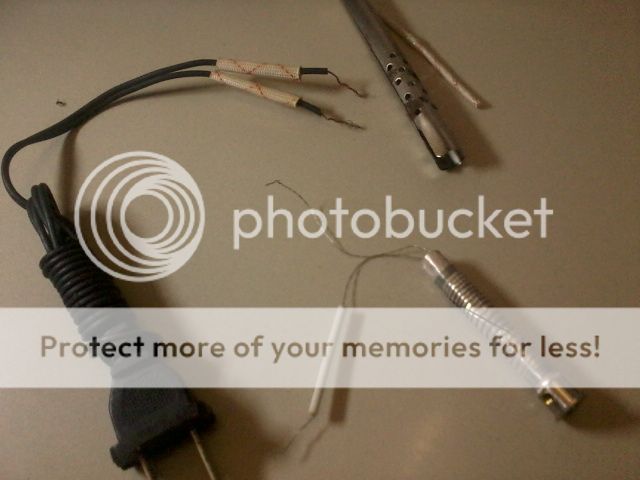RtxElite
Newbie level 3
Hey guys! I don't know much about electronics but I really need help in making an acrylic bender for case modding coz I can't afford buying pre-manufactured ones.
This is the guide that I've decided to follow:
https://www.youtube.com/watch?v=wVEf7PfuKxo
I'm planning to plug the acrylic bender directly to an AVR without the use of a power supply/transformer just to make it simpler. But I do have a transformer which I bought for a radio. Maybe I can use it.
Materials I have:
1.)Tamagawa Transformer - 500mA, 6V x 2
2.)Nichrome Wire(Spring Type) - 600 Watt - Wire is thin just like the one you see in a pen.
3.) Black and Red Wire
4.) Alligator Clips
5.) Wire for outlet
6.)AVR
Questions:
1.) Can I make the acrylic bender work by plugging it directly to an AVR/Outlet without any transformer/power supply?
2.)Without a transformer, can I control the amount of voltage being sent to the nichrome wire just by using alligator clips or by some resistor or is there any simpler way possible?
3.) As I stated the nichrome wire is spring type and I'm afraid the nichrome wire might bend and touch the wood or aluminum channel. Can I cut/shorten the nichrome wire and make it straight just like in the video? Or should I buy another type of nichrome wire(the one in a roll)?
I'm from the Philippines and we're using 220v. Please if you have any suggestions I'm willing to listen. I just need to make an acrylic bender the cheapest and easiest way possible. Thanks in advance.
This is the guide that I've decided to follow:
https://www.youtube.com/watch?v=wVEf7PfuKxo
I'm planning to plug the acrylic bender directly to an AVR without the use of a power supply/transformer just to make it simpler. But I do have a transformer which I bought for a radio. Maybe I can use it.
Materials I have:
1.)Tamagawa Transformer - 500mA, 6V x 2
2.)Nichrome Wire(Spring Type) - 600 Watt - Wire is thin just like the one you see in a pen.
3.) Black and Red Wire
4.) Alligator Clips
5.) Wire for outlet
6.)AVR
Questions:
1.) Can I make the acrylic bender work by plugging it directly to an AVR/Outlet without any transformer/power supply?
2.)Without a transformer, can I control the amount of voltage being sent to the nichrome wire just by using alligator clips or by some resistor or is there any simpler way possible?
3.) As I stated the nichrome wire is spring type and I'm afraid the nichrome wire might bend and touch the wood or aluminum channel. Can I cut/shorten the nichrome wire and make it straight just like in the video? Or should I buy another type of nichrome wire(the one in a roll)?
I'm from the Philippines and we're using 220v. Please if you have any suggestions I'm willing to listen. I just need to make an acrylic bender the cheapest and easiest way possible. Thanks in advance.
